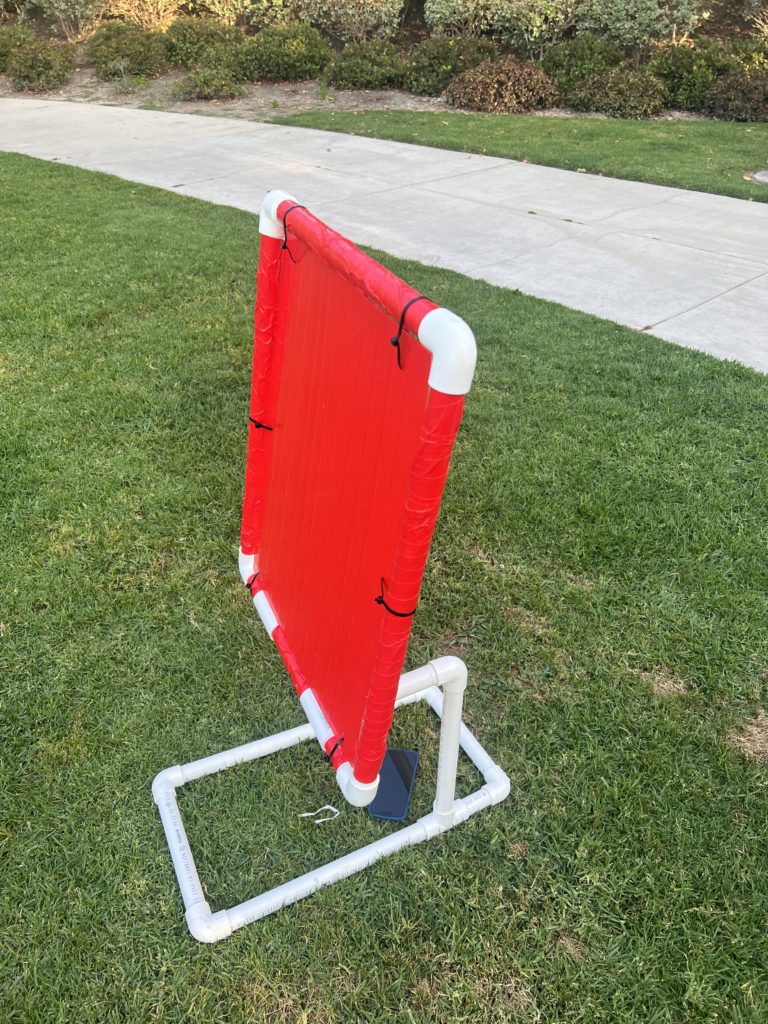Summer time is a great season to get outside for an ad hoc wiffle ball game. We have already covered here the various easy ways to build your own field and get a game going. But once you have a place you play you will want to know how to make a wiffle ball strike zone!
If you are going to play some wiffle ball, inevitably throwing nasty curves and sliders is going to come into play. And with that will come the standard arguments over what is a ball and a strike. To solve this problem you are gonna need a dedicated strike zone. This article covers simple wiffle ball strike zone plans to build your own and solve these arguments.
Wiffle ball strike zones are one of the easiest and most fun simple builds you can do. Sure you can grab a kit on Amazon (see wiffle ball strike zone kits) for less than $50, but if you want to do it yourself you can save a few dollars and have some fun with an easy trip to the hardware store.

The list of materials needed to build your own strike zone is pretty simple:
- PVC tubes
- PVC Glue
- Plexiglass of Metal Sheet (ones that make a satisfying “ping” sound are best)
- Zip ties
- Duct tape
- Rocks, sand, or weights of some kind
Most of these items can be found in some amount in many garages. If not there are plenty of suitable alternates that will achieve the same results.
For the PVC anything over 1 in seems to work. Less than that and the zone gets a bit flimsy. For the zone picture above it can be made using 10 pieces L-Corners, and just 4 T- connectors.
Along with that somewhere around 20 feet of tubing is enough to make the zone and the legs and holder. If you have scrap pieces you may need more in order to get each piece to the length needed.
Wiffle Ball Strike Zone Dimensions
There are competing ideals of what the acceptable size of a strike zone really is. Many wiffle ball strike zones will vary based on who is playing. This is not dissimilar to baseball where the strike zone is defined as “space over home plate which is between the batter’s armpits and the top of his knees when he assumes a natural stance“.

While baseball’s home plate is 17 inches wide, in practice strike zones can be up to 20 inches especially since ANY part of the ball can pass through the strike zone and the ball will be deemed a strike. For wiffle ball it is similar defined as ANY part of the ball hitting the defined strike zone will wind up being a strike.
The major difference is that in baseball that strike zone is defined when the ball passes over the plate, not where the catchers grabs it. In wiffle ball it is behind the plate since you can not put a physical raised strike zone on the plate otherwise the batter would not be able to swing!
So how big is a wiffle ball strike zone. We prefer to have it around 20-22in wide by 26-32 inches tall. If you make your PVC strike zone correctly you can also make the height of this adjustable since a standard strike zone is best about 18 inches (or 1.5 feet) off the ground.
We find that lower is fine as it lets younger players have fun while making older players rise to the challenge of hitting lower pitches.

If you are building your own strike zone just remember that ANY part of the ball hitting makes a strike. So if you are using a 20 in wide piece of metal as your strike zone, and 2 in thick PVC then your strike zone is really going to be 24 inches wide ( one 2in piece on either side) even if there is no clearance.
If you are using plywood or a piece of plastic that can be cut down to size this can be overcome, but if using a piece of sheet metal it can be tough to cut down to the right size without creating hazardous edges.